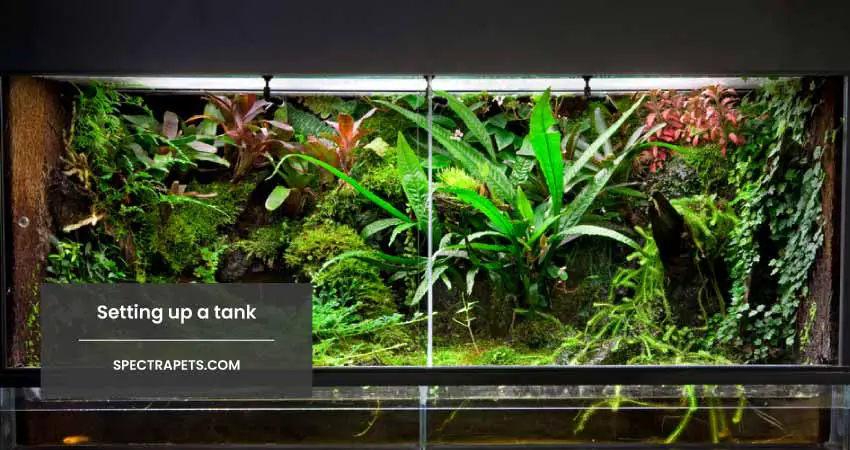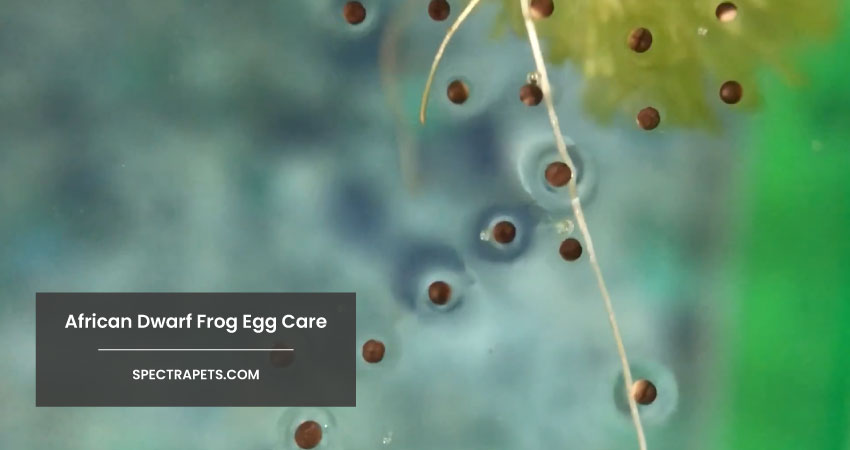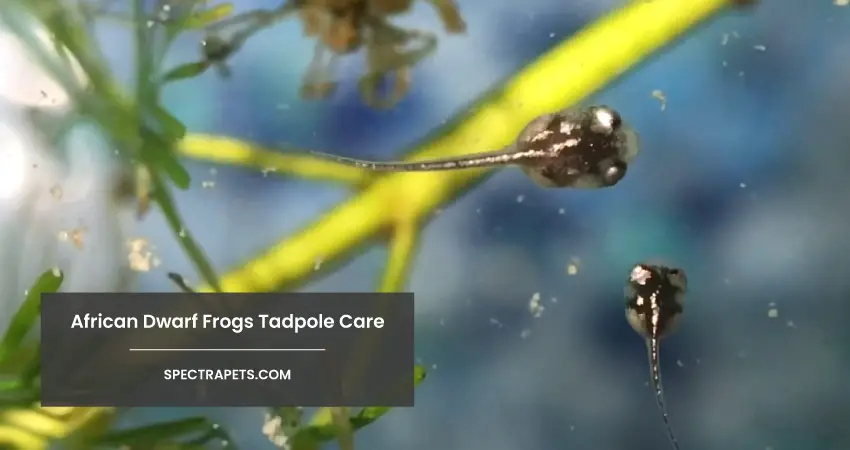Breeding time for African Dwarf Frogs is here! You might have managed to successfully house a few of these amphibians for breeding (if you’re a regular lurker of this site, it should be a cakewalk). However, knowing the right way to care for African dwarf frog eggs and their newborn babies is still something that might elude you for the time being.
Well, these frogs are pretty easy to maintain, but you still have to do some preparation before the eggs are even laid. If you don’t know what you’re doing, this can easily turn out to be a disaster.
In this article, I will explain how to set up before your frogs are ready to lay eggs and how to nurture them once they hatch. So jump along with me.
Setting up a tank

Care comes with preparation. If you’re not prepared enough, you won’t be able to do much, no matter how much you love your frog. Therefore, first, you need to ensure the correct environment is there. Below, I’m going to mention what you need to do at the very beginning:
Housing
Well, first of all, you need to set up a proper separate tank to house the eggs. This is because African Dwarf Frogs are known to eat their own eggs. So be careful about that.
An aquarium with a capacity of 10 gallons should do just fine. Choose a tank that has more width and less depth, since your newly hatched tadpoles will need to swim up to the water surface from time to time. The tadpoles can occasionally try to jump out of the aquarium, so install a lid on the top of the tank. The lid should be transparent so that you can monitor everything that is going on inside.
Temperature
Also, install an aquarium heater in your tank. You want to have a steady 80°F temperature so that your frog eggs stay warm. The tadpoles will be fine in cooler water. However, they will not develop as fast as they will in warm temperatures. You can incorporate a thermometer to monitor the water’s temperature.
pH Level of Water
Adjust the water pH level between 7.5 and 8.0. Try to keep the water as clean as possible. Change the water as often as necessary.
Filtration
Adding a sponge filter is pretty essential to maintaining the quality of the water. Keep in mind that it is best to avoid a standard aquarium filter, as the newly hatched tadpoles can get sucked into it.
Substrate and Decorations
Even though a tank with no decoration or substrate is easy to clean, you might want to add some to enhance the beauty of your aquarium. These will also provide your frogs with some space to hide.
It is not recommended to use any substrate or decorations until your frogs have fully hatched from eggs and have undergone a metamorphosis. Eggs and tadpoles tend to get stuck under the gravel and on the decor.
You can bring in live plants when the eggs develop into tadpoles if you must have decoration, but it’s best not to. The newly born tadpoles are pretty weak physically and cannot get around obstacles while swimming.
Now that everything has been set up, it’s time to wait for a short while until your frogs lay the eggs!
African Dwarf Frog Egg Care

Congratulations! Your pet African Dwarf Frogs have had a successful time breeding. You should have anywhere from 500 to 2000 eggs per female in your tank. Now it’s time to move on to the next step.
Important : Be ready to experience setbacks. The eggs of African Dwarf Frogs are fragile and have about an 80% mortality rate. In the worst case scenario, only 10% of the eggs will mature into fully grown adults.
First of all, transfer all of the newly laid eggs to the tank you just set up. The eggs are in danger from their own parents. They are extremely fragile, and the parent frogs may damage them. Also, these frogs also love to snack on their own eggs.
If you’ve set up the tank properly, your eggs will begin to hatch within 2 to 7 days. Monitor your eggs from time to time. If you see any damaged or moldy eggs, remove them immediately, as they will contaminate all the other eggs in the tank.
Just wait patiently until your eggs hatch into tadpoles and proceed to the next step.
African Dwarf Frogs Tadpole Care

Now that your eggs have hatched, you will see all the tiny tadpoles gathering at the bottom of the tank. During the first 5 days, the tadpoles will not move or eat. They will stick to the surface using their adhesive glands.
Since tadpoles have a critically high mortality rate, you should keep the following in mind:
- The tadpoles can fall victim to many diseases that are common to frogs, such as Dropsy or bloating. Here’s why your African dwarf frog is bloated.
- The parents can cannibalize the tadpoles, therefore, keep them separate at all costs.
- Low oxygen in the tank water can cause them to die rapidly
- They are also susceptible to bacterial infections.
After five days, the tadpoles will start swimming freely. This is when they start eating food. Choosing food at this stage can be hard, as they are extremely small in size. This is why you can provide them with liquid or powdered food or fish fry.
Make sure your tadpoles are given food on a daily basis. Once the tadpoles are swimming for a couple of days, you can give them small live foods, for example, brine shrimp that have been newly hatched.
In 10 or so days, your tadpoles will develop their hind legs. Now you can switch to flaked fish food. In another 2 weeks, their front legs will grow as well. At this stage, some mosquito larvae can be a solid choice.
Once the tadpoles lose their tails completely, you can transition to the diet of an adult African Dwarf Frog. Now their nutrition needs to be rich in protein. You can check out this article on what to feed African Dwarf Frogs to learn more about this.
Throughout the whole procedure, you need to feed them every day. Also, changing the water in the tank every other day will reduce bacterial infections. Once the tadpoles have fully transitioned to their adult forms, you can reduce the feeding to every 3 to 4 days.
Frequently Asked Questions
1. How long does it take African Dwarf Frogs to lay eggs?
It usually takes 2 to 3 weeks for a female African Dwarf Frog to lay her eggs.
2. How long does it take for African Dwarf Frog eggs to hatch?
Their eggs hatch anywhere between 2 and 7 days.
3. Will African Dwarf Frogs eat their eggs?
Yes, unfortunately. This species of frog is omnivorous and will eat anything that fits in its mouth and is protein-rich.
Final Thoughts
For the eggs to fully develop into adult frogs, it will take between a month and two months. Watching the tiny, newly laid eggs transition into fully grown African Dwarf Frogs is a fantastic experience that is definitely worth all the hard work!
If you’ve had success in breeding your own batch of African Dwarf Frogs, don’t forget to tell us more about your own experience below!

